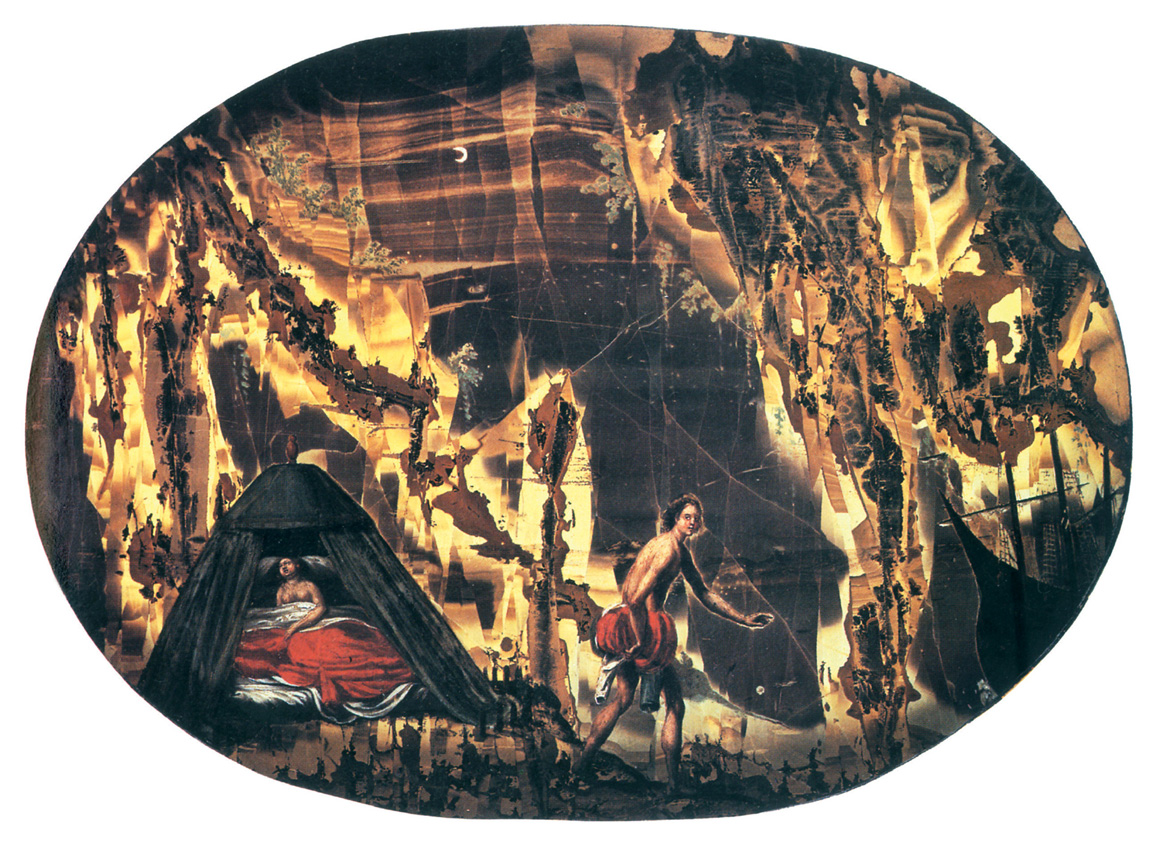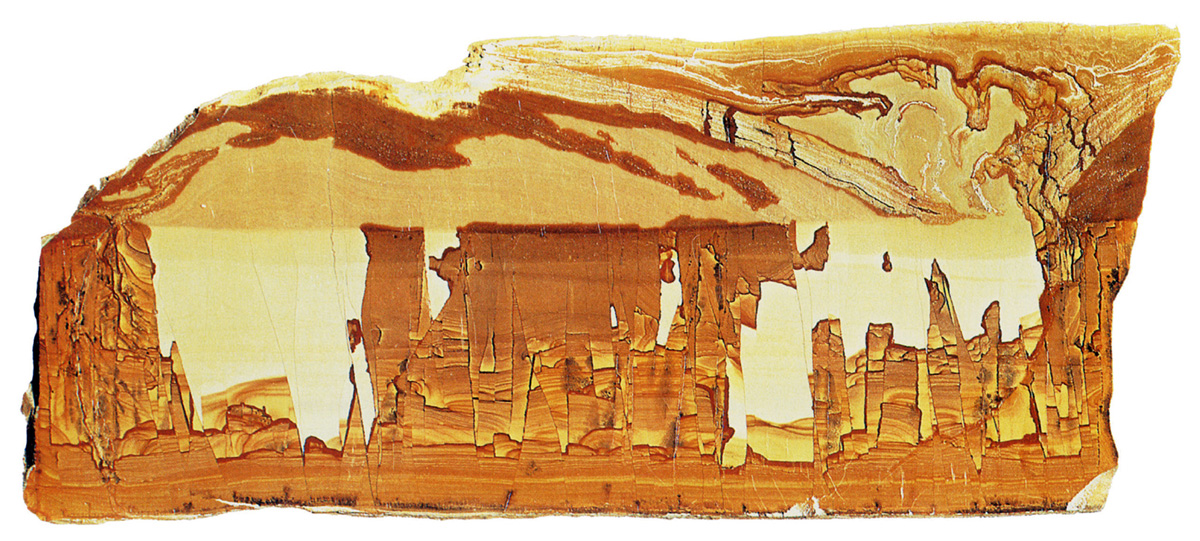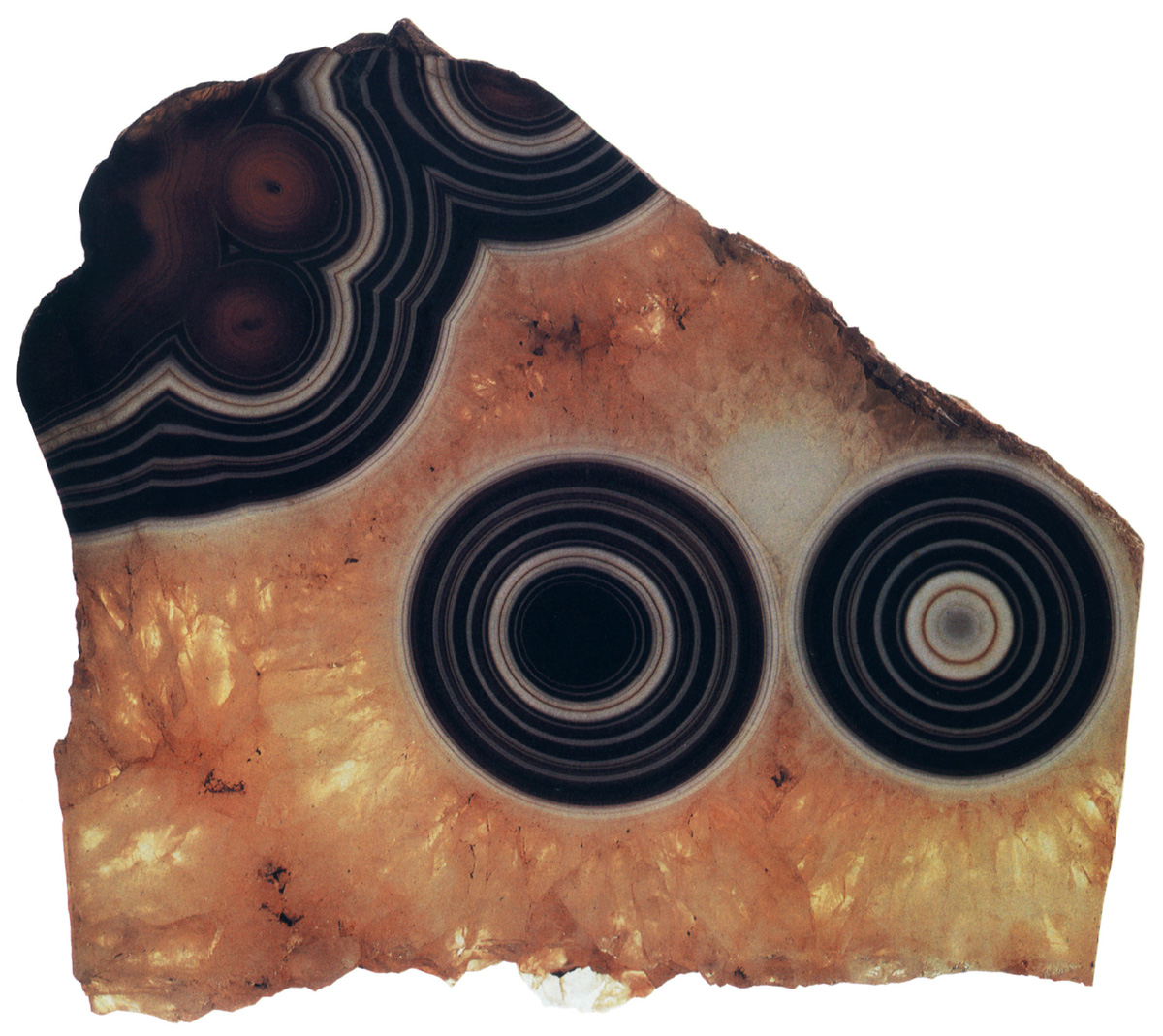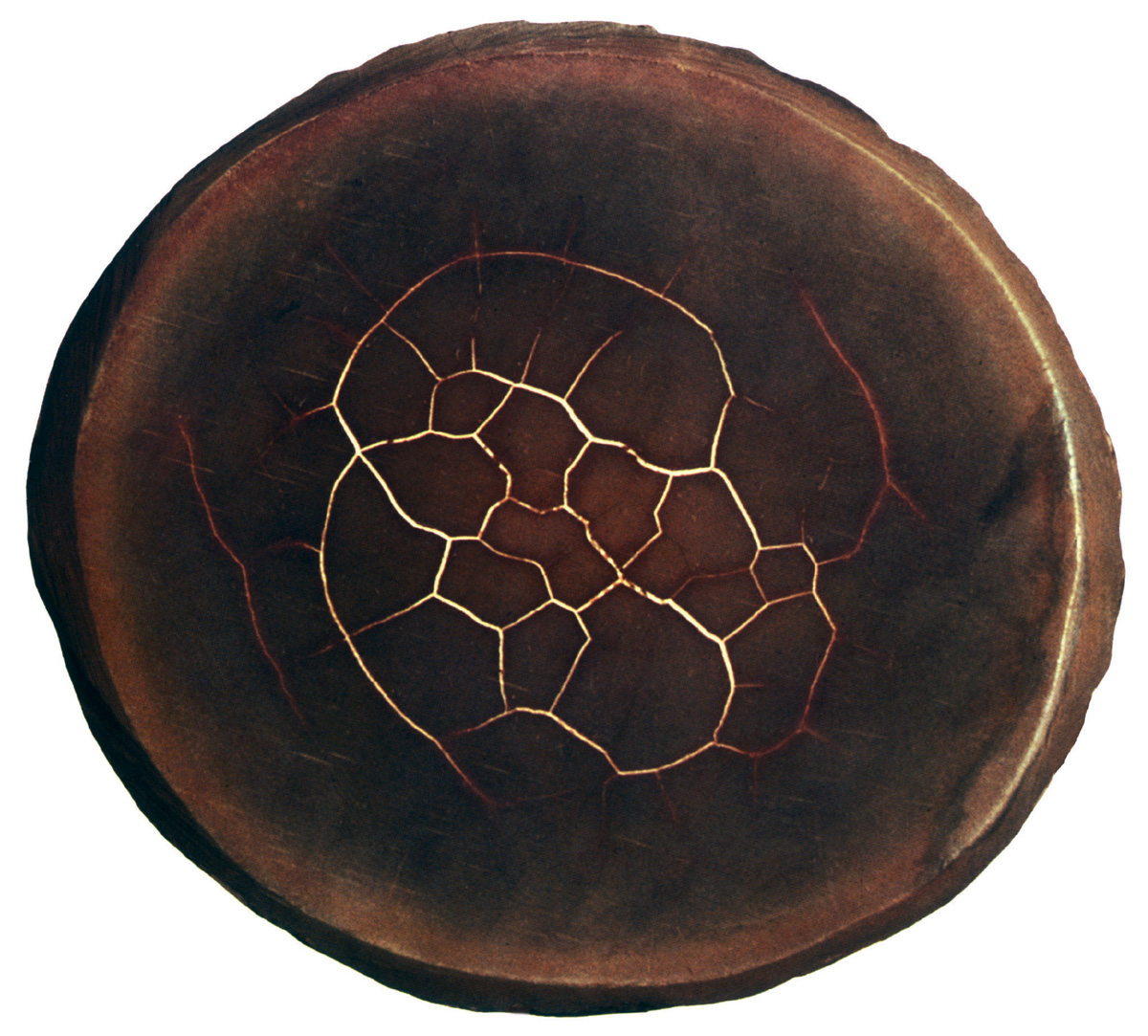The Writing of Stones
Roger Caillois’s imaginary logic
Marina Warner
Roger Caillois (1913–1978), polymath, aesthetic philosopher, historian of science, and social analyst of ritual and belief, was friends with André Breton and a fellow Surrealist; but in 1934 they parted over the Surrealist commitment to mystery for its own sake: Caillois was an investigator of a more empirical temper. Caillois’s disagreement with Breton arose when the two men were shown some Mexican jumping beans: beans that will suddenly twitch and take a leap into the air. Caillois conjectured that there was a worm or larva inside them, and he wanted to dissect one to find out; Breton objected roundly, denouncing Caillois as a low-grade positivist who refused the marvelous and defaced the poetic by wanting explanations—in other words, Caillois was of the party that wants to unweave the rainbow. For Breton, hasard objectif—objective chance or unpredictability—admirably disrupted the harmonious patterns of reason and delivered the mind-expanding stimulus of disorder: convulsive beauty. Caillois wrote a lettre de rupture to Breton, which confirmed the depth of his quarrel with Surrealism, declaring that he wanted “research and poetry” together. He went on, “I want the irrational to be continuously overdetermined, like the structure of coral; it must combine into one single system everything that until now has been systematically excluded by a mode of reason that is still incomplete.”[1]
Three years after he quarreled with Breton, Caillois became one of the founders, alongside Georges Bataille and Michel Leiris, of the so-called Collège de Sociologie in Paris, which was dedicated to exploring the nature of the sacred in society. Though none was a follower of any particular faith, all three believed in the sacred as a system that exceeded current understanding of reason and psychology—they were experimental mystics, mostly renegades from Catholicism. Two years later, Caillois published an important study of the topic, called L’Homme et le Sacré (1939). The three men were fascinated by magical processes, by cosmology, and by stories that anthropologists were bringing back from the four quarters of the globe. The journals and other publications they created—such as Minotaure, Documents, and Caillois’s own Diogène—reveal a restless and sometimes prurient probing of other cultures, especially their members’ intimacy with altered consciousness, magic rituals, and mysteries of knowledge. A desire to discover stratagems to accede to worlds beyond the senses fired their passion for the votive art, dances, and music which constituted the presence of the sacred.[2]


Caillois’s difference from Breton expresses very richly a fissure that runs through magical thinking and becomes more important in the last century—and perhaps this one. The Mexican jumping bean harbors a larva which, by springing into the air and landing elsewhere, helps to propagate its host. This marvel belongs to “natural” as opposed to supernatural magic, but it possesses the kinetic unpredictability of oracular devices: like the twitching of a dowser’s hazel wand, the quivering intestines of a sacrificed bird, the Ouija board’s sliding glass, even the Chinese fortune-telling fish that curls up in the palm of your hand to show how passionate you are, it moves to forces in the universe imperceptible to human senses, and consequently seems to illuminate a particular destiny—the truth-seeker’s fate. Breton’s uses of enchantment tightened the bond between the self and chance: Surrealist practices such as automatic writing, projective imagination, and cadavres exquis doodles enhance subjectivity; these are magical technologies of the individual self. But Caillois made a different rationalizing move out of this impasse. In the preface to Le Mythe et l’Homme in 1938, he identified “two fundamental attitudes of the mind, shamanism, displaying the power of the individual who struggles against the natural order of reality, and manism, showing the pursuit through self-abandon of an identification of self and non-self, consciousness and the external world.”[3] This is a very neat linguistic rhyme from two altogether different roots: shaman from Russian Siberian nomadic culture, and mana from the Maori concepts of the holy, are both terms introduced into Europe by nineteenth-century ethnography. For Caillois, the aggressivity and power-hunger of magicians—and religious leaders—belong to shamanism, whereas mysticism and poetry belong with manism. He further characterized these different modes of magical thinking as Satanist—the shamans—and, on the other hand, Luciferian, after the angel of light who wanted knowledge.
Caillois, insisting on cutting open the jumping bean and striking out in his “Luciferian” empirical quest for knowledge, was mounting a rescue operation of magic from the realm of irrational, human imagination, resisting the inward turn of the uncanny, and relocating magical thinking out there. There were strong motives for turning magical thinking toward contemporary scientific inquiry, as discoveries and inventions detected and harnessed new, impalpable powers. For one thing, Caillois has his precursors, such as conjurors who early on grasped the potential of new scientific instruments—not least magic lanterns, camera obscuras, and microscopes. In his letter to Breton, Caillois insisted on the marvellousness in science: he remonstrated that the newly discovered theories of the atom had collapsed all earlier thinking about nature; here was a “form of the Marvellous” that absolutely required a new philosophy (writing in 1934, he was being prescient). A little while after the incident with the beans, when the conflict had acquired a certain moment and fame, Breton explained that Caillois hadn’t understood him. He would not have been opposed to cutting one open, he said, but he was determined that all the possibilities that the mystery offered for reverie, dream, and wonder should be exhausted before doing so.[4]
It does not follow that the scientific spirit of empirical inquiry runs against dreaming, and Breton was wrong to think Caillois’s investigative methods opposed wonder. Material mysticism led Caillois back to magical thinking, which he expanded further than the Surrealist interest in chance and coincidence as he probed for insights into the order of things. Caillois was equally, perhaps even more, fascinated with magic than the Surrealists, but he wanted to probe what might exist as phenomenally marvelous, beyond the subjective self—he was a scholar of the sacred, and from the episode of the jumping beans onwards, he looked for its character and its workings in actual phenomena. In this sense he was more of a believer—though not in a personal god or a religion. Where Breton exalted the perceiver, Caillois wanted to go beyond these anthropocentric limits. But the distinction cannot be held hard and fast as a standoff between subjectivity and objectivity. As Peter Galison has commented on the Rorschach test, prime trophy of Surrealism’s long reach, “no account of Rorschach subjectivity (how we characteristically perceive our world) would be possible without a concomitant characterization of objectivity (how the world is without that distortion). We therefore need a joint epistemic project addressing the historically changing and mutually conditioning relation of ‘inside’ and ‘outside’ knowledge.”[5] Caillois spent his thinking life trying to work out this position.
The quarrel with Breton throws light on the survival of ancient wisdom within the newest scientific processes developed probing and analyzing matter. Caillois is in fact not the sole participant in this twentieth-century aesthetic turn of the oracular tradition. His writing grows gradually ever closer to the precise observation, combined with lyrical delirium, that is found in the prose and poetry of Paul Valéry as well as the poetic phenomenology of Francis Ponge. Valéry, responding to the discovery of the electromagnetic field, had also found in material phenomena the proof of a secret, metaphysical order. These new frontiers of knowledge influenced psychic research, in symbiosis with the invention of new communications systems.

Approaches to the hieroglyphic universe found in the new science of the seventeenth century offer a perspective on the modern science of the twentieth, when divination changed direction but did not lose momentum. Divining processes help define the character of magical thinking: first, because their prime goal is knowledge, especially of events and outcomes hidden in time—magical thinking yearns to overcome human limits, especially the contingencies laid upon us by the physical constraints of the here and now. Secondly, they posit some power that orders and patterns phenomena and freights them with significance, if only they could be rendered legible, scrutable; this order obeys a unifying energy in the cosmos, which aligns the particular incident or being with a general and universal order according to a correlation between microcosm and macrocosm. This kind of system also finds expression in another magical system, the network of natural correspondences, wrought in a variety of ways (pictorial resemblance, synaesthetic relations, verbal punning), as in Baudelaire’s famous sonnet, influenced by Swedenborg:
Nature is a temple where living pillars
Let sometimes emerge confused words …
Belief in invisible lattices of significant meaning leads to a third pillar of magical thinking—that some individuals are uniquely gifted to interpret encrypted messages. Such people are gifted to tune in to the imperceptible transmissions emanating from phenomena, to sense the presence of hidden aquifers, pick up the ominous aura in a room before a disaster, or scry the floating of an egg yolk in water for news of ships at sea. But this third principle, while warranting the importance of seers, clairvoyants, magi, sibyls, mediums, and channelers, is not indispensable to the penetrating, oracular optic: sometimes, like the guard on the battlements of Elsinore, anyone and everyone can see the ghost and hear its dreadful warning.
Materialist mystics, among whom I count Caillois, do not search for self-knowledge, nor for foreknowledge of their destiny, the sirens’ secret; but they emphatically investigate hidden meanings and scan the deepest horizons of time into infinity: the world turns into an inexhaustible book written in hieroglyphs. They apply the occult wisdom of Renaissance Neoplatonists and their magical cosmology, linking microcosm and macrocosm according to principles which inspired Romantic metaphysics, above all in Germany: Goethe’s anti-Newtonian critique and his counter-Enlightenment conviction that the superstitions and folklore of a culture contained intimations of deep knowledge have gained rather than lost ground. “Superstition,” wrote the German poet, “actually only seizes false means in order to satisfy a genuine need. It is therefore neither so reprehensible as it is considered, nor so infrequent in so-called enlightened ages and among enlightened people.”[6] He continued, “We all walk in mysteries. We are surrounded by an atmosphere about which we still know nothing at all. We do not know what stirs in it and how it is connected with our intelligence. This much is certain, under particular conditions the antennae of our souls are able to reach out beyond their physical limitations.”[7] The new horizons of geology, biology, and, above all, physics and mathematics beckoned to literary imaginations, where ancient ideas of magical correspondences, action at a distance, and fields of energy were reactivated and refreshed.
Magical thinking in the nineteenth century consequently involved rational attempts at decipherment; its underlying impulse towards intelligible, cogent meaning paradoxically moved it into the traditional terrain of the occult, of sorcery, and shamanism; all its wealth of ingenuity in coming up with irrational measures remained directed at turning the world into a sign system. To the triad of signs set forth by C. S. Peirce—index, image, diagram—a fourth form of picturing could be added: the cipher or enigma. In order to decode such signs, various magical principles come into play: a trust in chance as a revelatory organizational tool (a throw of the dice); a belief in microcosmic-macrocosmic relations, which holds that underlying unifying forces impart significance to the appearance of marks and patterns in nature, in phenomena such as cloud formations, figured stones, and “spontaneous” images; and thirdly, the view that these forces enjoy a different relation to time itself, a magical relation which creates coincidence across time and space, and meaningful correspondences. All three principles return in the twentieth-century aesthetic of organic natural symbolism.

As Nature abhors a vacuum, so does the mind resist meaninglessness; it invents stories to explain haphazard incidents, and to provide reasons and origins; the amorphous, the inchoate, the formless, have beckoned irresistibly to the shaping powers of thought and imagination. Humans are polyglot creatures of language; signs attract meanings, and symbols stick to forms, verbal and visual. Pattern, design, system, significations—meaning has accrued to every sort of natural phenomenon. The Rorschach test represents the most common and familiar—scientific!—use of icasms, applying for medical ends the idea that the human mind can make sense of forms without inherent meanings, and that the signification the observer discovers there conveys genuine insight into the observer’s own character and fate. Here the seer’s role plays back and forth between the two people involved: the patient reads the signs, and the doctor then interprets the import of the reading and projects the interpretation back on the interpreter.
The subjectivity of scrying raised a specter of fallibility, and a struggle consequently began taking place to free the processes of decipherment from this debateability; science, as ever, seemed to offer the hope that there might exist a stable field of meaning, a language of things, beyond human error and contingency.
Visiting London in 1894, the young poet Paul Valéry was excited to a state of frenzy by his readings in the new physics—especially James Clerk Maxwell’s Treatise on Electricity and Magnetism. Scientific discoveries of the nineteenth century were refashioning the perception and the very concept of the physical world: the invisible hand behind the signatures was identified with a difference, and the effect was indeed electric: in Maxwell’s revelation of invisible “lines of force,” Valéry recognized a key metaphor for the role of imagination in poetic vision, which could also allow phenomena that cannot be directly perceived to come into being and combine together as objects of mental contemplation. For Valéry, this work needed an understanding of mathematics: he wanted to perform in poetry a kind of linguistic algebra that would render intelligible the elusive and impalpable geometry of reality. “The study of my imagination …” he wrote in his London notebook, “has led me to considerations of mechanics and geometrics, which is hardly astonishing or hypnotizing. It is sometimes possible. Role of time, of space, of mass.”[8] This movement of Valéry’s exultant thought, as it follows the lines of forces in the electromagnetic field to the physical architecture of space-time and mass, led him to posit “a logic of the imagination” which attunes human consciousness with phenomena according to deep symmetries that remain invisible and impalpable in the ordinary order of things—like sound and radio waves, like the interior of the nucleus.
The same thought returns in the ecstatic prose poetry of Roger Caillois two generations later, as he contemplates rocks and stones, meteorites and crystals. He called stones l’orée du songe—the shore of dreaming—and he amassed a wonderful collection, which he left to the Museum of National History in Paris where you can go and look at them; he also wrote two luminous books about stones. These are not about precious stones such as diamonds and rubies but about dendrites, agates, Chinese scholars’ stones—pebbles and rocks that look like nothing much at first but can open up wonders under contemplation. Pierres (Stones) from 1966 is a Valéry-like prose poem, intense and rhapsodical. They lead him to understanding the physical makeup of the world, its “algebra, vertigo, and order.”[9] He exults in their inscrutability and their lack of affect, their silence, their sheer stoniness. When Caillois reads “the writing of stones,” when he pores over the whorls and swirls in an agate, he ponders the revelation of cosmic time they grant him. “They provide moreover, taken on the spot and at a certain instant of its development, an irreversible cut made into the fabric of the universe. Like fossil imprints, this mark, this trace, is not only an effigy, but the thing itself stabilized by a miracle, which attests to itself and to the hidden laws of our shared formation where the whole of nature was borne along.”[10]
How did the circles in the stone grow there—like tree rings, like ripples in a pond? Lines of force exert their power uniformly through space-time at any scale, no matter how small, or how vast. As D’Arcy Wentworth Thompson expressed it in On Growth and Form:
We are apt to think of mathematical definitions as too strict and rigid for common use, but their rigour is combined with all but endless freedom. The precise definition of an ellipse introduces us to all the ellipses in the world. … We discover homologies or identities which were not obvious before, and which our descriptions obscured rather than revealed: as for instance, we learn that, however we hold our chain, or however we fire our bullet, the contour of the one or the path of the other is always mathematically homologous.[11]The writing in the rock is the signature of time itself, captured as Valéryan forms in movement, displaying their growth and articulation over eons in the stilled swirls of their inner core, the camouflage stripes and fault-lines of their structure, their veins and cells; it is possible to see clearly, vertiginously, in these sections through a pebble or a rock the flow of organic matter as it took shape and petrified.
Throughout Pierres, Caillois writes in a heightened poetic prose, and he discovers an alter ego in the eccentric Taoist painter and governor, Mi Fu, who in the twelfth century found ecstasy in caves filled with stalactites and stalagmites and neglected his duties (a Chinese Prospero) for this secret knowledge, this art which could render initiates immortal. Like Mi Fu, Caillois develops a passion to collect stones that are then arrayed in three different but proximate categories—bizarre, insolite (unusual), and fantastique. Like the Taoist, he discovers in stones “not beauty … but lasting standards and the very idea of beauty, I mean the inexplicable and useless addition to the complexity of the world.”[12] By the end, Caillois has surrendered to the objects of his study: the ideal state is to “let Nature pass into you.”[13] By dint of his enraptured thinking on stones, he feels that he is more alive than ever, chased by the wind of his passionate responses. But he has himself also turned to stone, he feels—and he delights in his metamorphosis.
He too recognized in his feeling for stones the operations of a logique de l’imaginaire: this logic of the imagination is rooted in the laws of space and time, light and color, evolution and decay, naturally evolving shapes and naturally occurring rhythms, and it provides the underlying structure of aesthetics. Caillois praises especially the “kaleidoscopic metamorphosis” of phenomena such as flames and waterfalls.[14]
In his second work focusing on stones, L’Ecriture des pierres (The Writing of Stones), written towards the end of his life, Caillois struggled to formulate his credo about where his decipherment might lead: “The tissue of the universe is continuous,” he proposed. “I can scarcely refrain, from suspecting some ancient, diffused magnetism; a call from the center of things; a dim, almost lost memory, or perhaps a presentiment, pointless in so puny a being, of a universal syntax.”[15] With this principle, Caillois expands on how a cluster of certain natural circumstances, “proclaim, or illustrate, more spectacularly than is usually the case, but at the same time in a manner almost obligatorily reticent and cryptic, the existence of fundamental constants which ensure the latent continuity of the tissue of the world. Then the object makes a sign, becomes sign. It attracts onto itself that exact imagination, which reveals the object more than inventing it.”[16]
The marvelous in nature offers given or found works of art, such as stones, which then shape and lead human aesthetics (we would now say consciousness is hard-wired to respond) from delight to horror, desire to repulsion. He concludes, “Philosophers have not hesitated to identify the real and the rational. I am persuaded that a different bold step … would lead to discover the grid of basic analogies and hidden connections which constitute the logic of the imaginary.”[17]
Oddly, this perception offered by stones returns us to ancient metaphorical visions of the cosmos; in Ovid’s Metamorphoses, inorganic and organic life, stone and flesh, do not stand as opposite poles but flow and fuse along the continuum uniting all things. Valéry’s impulse to find a literary analogue operating with language for the new physics’ vision of nature doesn’t disrupt poetry’s endeavor or twist it from a long-established orbit. The search for metaphor can march with the experimental method of science, as Roger Caillois the manist believed—and practiced in his writing and his thought.
A different version of this text appeared in English and Italian under the title “The Language of Stones” / “Il Linguaggio delle pietre” in the recent book Joan Jonas, ed. Anna Daneri (Milan: Charta, 2007).
- Roger Caillois, letter of 27 December 1934 to André Breton, in Claudine Frank, ed. The Edge of Surrealism: A Roger Caillois Reader (Durham, NC, and London: Duke University Press, 2003), pp. 84–86.
- See the fine exhibition catalogue by Dawn Ades, Simon Baker, Caroline Hancock, and Denis Hollier, eds., Undercover Surrealism: Georges Bataille and Documents (London: Hayward Gallery, 2006).
- Denis Hollier, introduction to Anatole Lewitzky, “Shamanism,” in Denis Hollier, ed., The College of Sociology, 1937–1939 (Minneapolis: University of Minnesota Press, 1988), p. 250.
- Roger Caillois, “Intervention Surréaliste,” in Cases d’un échiquier (Paris: Gallimard, 1970), p. 211.
- Peter Galison, “Image of Self,” in Lorraine Daston, ed., Things that Talk (New York: Zone Books, 2004), p. 292.
- Ernst Grumach, Goethe und der Antike (Berlin: Akademie Verlag, 1949), quoted in Gloria Flaherty, Shamanism and the Eighteenth Century (Princeton, NJ: Princeton University Press, l992), p. 168.
- Goethe, letter of 23 July 1820, quoted in Flaherty, Shamanism and the Eighteenth Century, p. 173.
- Paul Valéry, in Florence de Lussy, ed., Carnet inédit dit “Carnet de Londres” (Paris: Gallimard, 2005), p. 114.
- Roger Caillois, Pierres (Paris: Gallimard, 1966), p. 8. My translation.
- Ibid, p. 117. “Shared formation” here translates Caillois’s phrase lancée commune, literally “shared thrownness,” which evokes the working of clay on a potter’s wheel. My translation.
- D’Arcy Wentworth Thompson, Growth and Form (Cambridge: Cambridge University Press, 1942), p. 1027.
- Caillois, Pierres, p. 88. Translation used here is drawn from Jean Burrell, “Extracts from Stones,” Diogenes, vol. 52, no. 3 (2005), pp. 91–92.
- Ibid., p. 103. My translation.
- Roger Caillois, The Writing of Stones, trans. Barbara Bray (Charlottesville: University of Virginia Press, 1985), p. 100.
- Ibid., pp. 103–104.
- Roger Caillois, La Pieuvre: Essai sur la logique de l’imaginaire (Paris: La Table Ronde, 1973), p. 229. My translation.
- Caillois, Pierres, p. 230. My translation.
Marina Warner is a writer and curator living in London. She is currently writing Stranger Magic, exploring the influence of the Arabian Nights, and at work on a novel inspired by her childhood in Egypt. Recent Exhibitions she has worked on include “Eyes, Lies & Illusions” at the Hayward Gallery, London, and “Only Make-Believe: Ways of Playing” at Compton Verney, Warwickshire. Her most recent book Phantasmagoria: Spirit Visions, Metaphors & Media (Oxford University Press, 2006) has recently been published in paperback. For further information, see www.marinawarner.com.